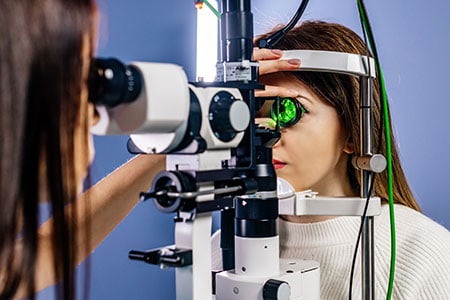All Categories
Featured
Reduced vision, a problem where standard glasses, call lenses, or surgical treatment can not fully restore view, can make everyday tasks challenging. Reduced vision rehab supplies a range of sources to aid people keep their freedom and high quality of life. This write-up checks out the alternatives offered for those seeking support in handling their aesthetic impairments.
What Is Reduced Vision Recovery?
Reduced vision rehabilitation is a structured approach to help people optimize their staying vision and adapt to brand-new methods of doing day-to-day tasks. Specialists function with individuals to create personalized strategies, including devices, strategies, and training programs that match their special needs.
![]()
Key Options for Reduced Vision Rehabilitation
Vision Enhancing Gadget
Optical Aids: Gadget like magnifiers, telescopic glasses, and unique analysis lenses can boost quality for analysis, composing, and other close-up tasks.
Digital Aesthetic Help: Devices such as digital magnifiers and portable video magnifiers offer adjustable zoom capabilities for different tasks.
Wearable Modern technology: Smart glasses equipped with cams and voice responses offer advanced solutions for improving vision.
![]()
Assistive Innovation
Screen visitors, text-to-speech applications, and tools with voice commands make innovation available for individuals with reduced vision.
Mobile phone applications, such as navigation aids and object acknowledgment tools, assistance users interact with their environments better.
Training and Therapy
Positioning and Flexibility Training: Specialists educate abilities for navigating areas securely, consisting of the usage of white walking sticks or overview pets.
Daily Living Skills Educating: Rehabilitation programs offer approaches for cooking, cleansing, and individual treatment, making sure that people can perform necessary jobs individually.
Aesthetic Abilities Training: Exercises created to enhance using remaining peripheral vision can boost visual performance.
Ecological Adjustments
Adjustments to living or workspaces can significantly boost access. Examples consist of:
Installing brighter lighting.
Adding high-contrast markings to devices.
Organizing furniture to create clear pathways.
Support Networks
Psychological and mental assistance is a vital element of rehab. Support system, therapy sessions, and therapy solutions can aid people manage the difficulties of vision loss.
![]()
Peer networks link people with similar experiences, fostering a sense of neighborhood and shared learning.
Just How to Gain Access To Low Vision Recovery Services
Reduced vision rehabilitation solutions are often supplied by:
Reduced Vision Clinics: Operated by ophthalmologists and optometrists specializing in vision impairments.
Physical Therapists: Specialists in adjusting settings and tasks to match private needs.
Not-for-profit Organizations: Teams such as the American Structure for the Blind (AFB) or neighborhood blindness support organizations offer useful resources and references.
Verdict
Coping with low vision can feel frustrating, yet with the ideal support and devices, people can remain to lead satisfying lives. Low vision rehab provides a range of sources customized to enhance functionality, increase self-confidence, and boost lifestyle. Take into consideration reaching out to an expert or rehab facility to check out the several choices offered if you or an enjoyed one is facing the difficulties of low vision. Together, these solutions make certain that vision loss does not specify or limit one's possibility.
What Is Reduced Vision Recovery?
Reduced vision rehabilitation is a structured approach to help people optimize their staying vision and adapt to brand-new methods of doing day-to-day tasks. Specialists function with individuals to create personalized strategies, including devices, strategies, and training programs that match their special needs.

Key Options for Reduced Vision Rehabilitation
Vision Enhancing Gadget
Optical Aids: Gadget like magnifiers, telescopic glasses, and unique analysis lenses can boost quality for analysis, composing, and other close-up tasks.
Digital Aesthetic Help: Devices such as digital magnifiers and portable video magnifiers offer adjustable zoom capabilities for different tasks.
Wearable Modern technology: Smart glasses equipped with cams and voice responses offer advanced solutions for improving vision.

Assistive Innovation
Screen visitors, text-to-speech applications, and tools with voice commands make innovation available for individuals with reduced vision.
Mobile phone applications, such as navigation aids and object acknowledgment tools, assistance users interact with their environments better.
Training and Therapy
Positioning and Flexibility Training: Specialists educate abilities for navigating areas securely, consisting of the usage of white walking sticks or overview pets.
Daily Living Skills Educating: Rehabilitation programs offer approaches for cooking, cleansing, and individual treatment, making sure that people can perform necessary jobs individually.
Aesthetic Abilities Training: Exercises created to enhance using remaining peripheral vision can boost visual performance.
Ecological Adjustments
Adjustments to living or workspaces can significantly boost access. Examples consist of:
Installing brighter lighting.
Adding high-contrast markings to devices.
Organizing furniture to create clear pathways.
Support Networks
Psychological and mental assistance is a vital element of rehab. Support system, therapy sessions, and therapy solutions can aid people manage the difficulties of vision loss.

Peer networks link people with similar experiences, fostering a sense of neighborhood and shared learning.
Just How to Gain Access To Low Vision Recovery Services
Reduced vision rehabilitation solutions are often supplied by:
Reduced Vision Clinics: Operated by ophthalmologists and optometrists specializing in vision impairments.
Physical Therapists: Specialists in adjusting settings and tasks to match private needs.
Not-for-profit Organizations: Teams such as the American Structure for the Blind (AFB) or neighborhood blindness support organizations offer useful resources and references.
Verdict
Coping with low vision can feel frustrating, yet with the ideal support and devices, people can remain to lead satisfying lives. Low vision rehab provides a range of sources customized to enhance functionality, increase self-confidence, and boost lifestyle. Take into consideration reaching out to an expert or rehab facility to check out the several choices offered if you or an enjoyed one is facing the difficulties of low vision. Together, these solutions make certain that vision loss does not specify or limit one's possibility.
Latest Posts
Signs When Your Car Needs Expert Auto Repair at Montclare Auto Repair
Published May 26, 25
1 min read
Find Auto Services & More: Complete Auto Care Solutions from Montclare Auto Repair
Published May 24, 25
1 min read
Recognizing When Your Car Needs Expert Car Repair at Montclare Auto Repair
Published May 23, 25
1 min read
More
Latest Posts
Signs When Your Car Needs Expert Auto Repair at Montclare Auto Repair
Published May 26, 25
1 min read
Find Auto Services & More: Complete Auto Care Solutions from Montclare Auto Repair
Published May 24, 25
1 min read
Recognizing When Your Car Needs Expert Car Repair at Montclare Auto Repair
Published May 23, 25
1 min read